Core Preparation
Core Drying
Draining wet cores and drying them before splitting is a necessary step if soft, wet cores are to be split without additional deformation of muddy saturated sediment. Deformation during splitting can distort or destroy bedding. The goal in this initial drying step is not to get the core to its final moisture content for image collection but to dry it enough to stiffen the sediment and prevent it from liquefying when the core liner is cut and the core is split.
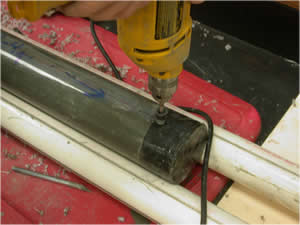
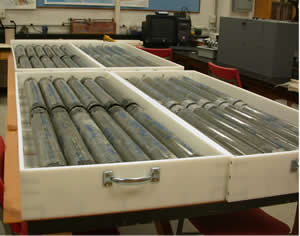
Top: Drilling air holes in liners. This line of holes will later become the location of a slice in the core liner. Bottom: Air-drying cores in boxes that also have lids to slow the drying process if necessary. Each core section is 2.5 feet long.
Core Splitting
PVC core or core liner slicing with a table saw and guide made of PVC pipe. Only the core liner/tube is cut on opposite sides, not the sediment in the core. An abrasive saw blade is used for this procedure. Because cutting of core liners cannot be done with the table saw’s normal safety shield in place, extreme caution must be taken to prevent an injury.
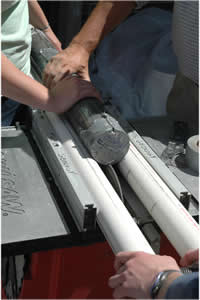
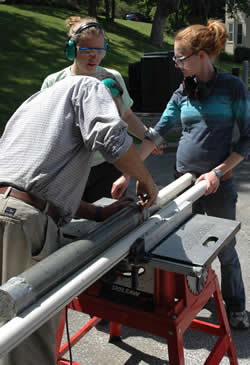
Cores are cut on a table saw using an adjustable guide. Left to right: Jack Ridge, Emily Voytek, Catherine Beck
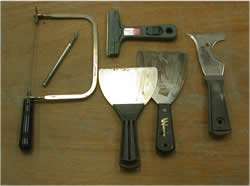
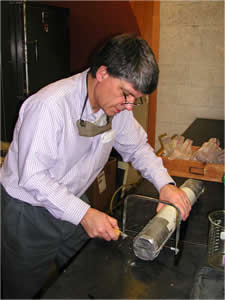
Core splitting, scraping, and shaving tools.Core splitting with a coping saw.After each side of the core liner is cut, a coping saw is used to split the sediment in the core. A wire is often used for this procedure with clayey marine sediments but this is not recommended with glacial varves because concretions or dropstones may be encountered and varve sediment is often very compacted and tough, making sawing necessary.
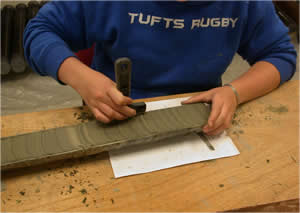
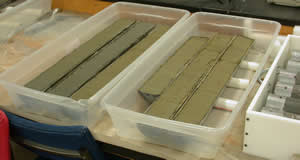
After splitting, a light scraping of the surface of the core halves to remove saw marks can be done with a paint scraper. Final core drying improves color contrast on varve images and allows for better gray scale analysis. When the cores become drier a razor scraper can be used to make the final preparation of the core surface for collecting digital images.
Final Drying and Shaving of Cores
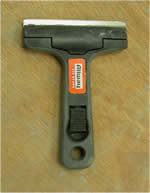
Shaving the dried cores after the silty and sandy layers are mostly dry greatly improves the resolution of laminations for collecting high resolution digital images. The tool of choice for shaving cores is a wallpaper scraper that carries a long razor blade. The corners of the blade have been ground off.
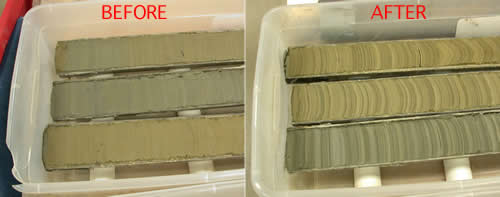
Cores before they were dried and shaved compared to after these procedures. The details of bedding become much more distinct. Shown are two different sets of cores.


